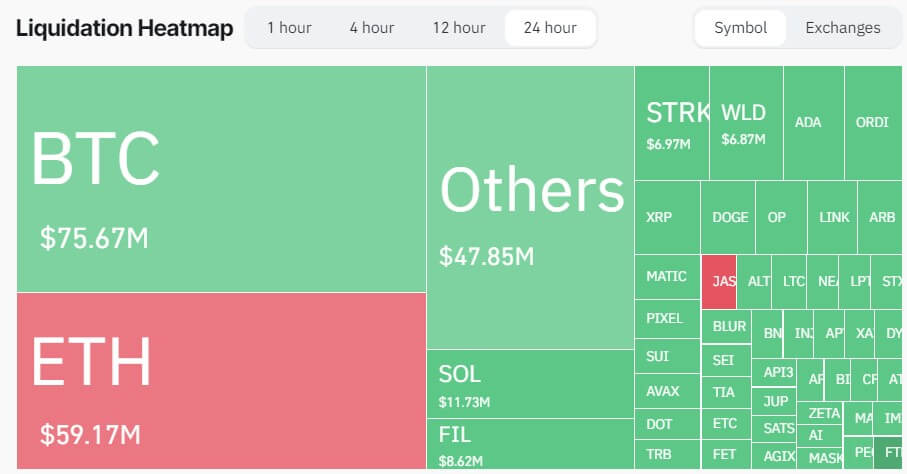‘Open-source’ CBDCs aren’t going to protect you from government
People are taking notice more each day that central bank digital currencies, or CBDCs, are not worth the risk. Yet, to combat these concerns, some policymakers have been increasingly looking toward open-source coding as a way to offer transparency and perhaps win the public’s trust. But make no mistake, while transparency is welcome, it’s no silver bullet.
For those familiar with cryptocurrency, the concept of using open-source code needs no introduction. However, for those that might not be familiar, the concept simply refers to publicly publishing the source code behind a project instead of locking it away as confidential or a trade secret. For example, the code behind Bitcoin (BTC) is free and open for all to see.
Making a project open source has many advantages. For instance, doing so opens the doors for external audits. After a careful review, someone may find a vulnerability that wasn’t apparent to the original designers. Or, perhaps more concerningly, someone may find something nefarious embedded deep within the project.
Related: 3 trends to think about before Bitcoin's bull run resumes
Turning back to the example of Bitcoin, having the code be freely available allows people to verify that the 21 million supply cap is more than just an advertising slogan — it’s embedded within the design. In effect, publishing the code behind a project helps people know who they can (or can’t) trust.
Yet, open-source coding is no silver bullet — especially when it comes to the problems that plague CBDCs.
Consider what happened in Brazil last year. Brazil’s central bank published the source code for its pilot CBDC and it took just four days for people to notice that the CBDC had tools for surveillance and control embedded within its code. Were this the case with a decentralized cryptocurrency, people could carve out a new path and fork the chain, or simply not use it. But what recourse is there for CBDC users when a CBDC is the epitome of centralized money under government control?

People could speak out, but central banks are often steered by unelected officials who do not answer to the public. People could choose an alternative money, but governments often try to stomp out currency competition. So while the transparency is helpful for understanding how the system works, it does little by itself to help citizens who want to change the system.
Shifting the focus slightly, the U.S. code offers an illustrative example. Anyone can crack open the U.S. code, look to title 12, chapter 35, section 3413 and section 3414 to see there are 20 different exceptions that allow the government to effectively ignore your right to financial privacy. This transparency is certainly helpful for understanding how the government maintains such an expansive financial surveillance system, but transparency alone is not enough to fix the problem.
Another example of why open-source code is not a silver bullet for fixing CBDCs can be seen in Norway where the Norwegian central bank also published the code behind its CBDC project. Yet here the problem is slightly different — it demonstrates that what is open source today may not be open source tomorrow. When dealing with a centralized entity like a national government, that decision can come quickly and without consulting the public. Norway’s central bank acknowledged this point quite explicitly by noting that its current focus in no way represents a long-standing commitment to open-source code.
As a final example, the experience in the United States also demonstrates that previous statements do not represent a future commitment to open-source technology. The Federal Reserve has conducted CBDC research and pilots for years. However, one notable project was the collaboration with MIT. Referred to as “Project Hamilton,” this project led to the creation of an open-source CBDC model. Yet, nothing binds the Federal Reserve to the results of Project Hamilton or any open-source model. In fact, the Federal Reserve seems to have all but abandoned the project.
Related: Jerome Powell’s pivot heralds a boring summer for Bitcoin
We are still seeing the very early stages of CBDC development, but these examples are telling. Policymakers should be commended for embracing transparency, but the public shouldn’t be fooled into thinking that transparency is a panacea that fixes all of the problems posed by a CBDC.
Although the use of open-source technology has been one of the cornerstones of cryptocurrency development, people should not lose sight that decentralized cryptocurrency also gives people the power to act on that information. And it is that condition that has created a revolution in the way people think about money and finance.
There is no way a CBDC can replicate that benefit. The problems here extend far beyond the often-obfuscated conduct of central banks and go right to the core question of how much power a government should have . Fundamentally, the problem with CBDCs is that they risk centralizing money more than ever before, so much so that it risks giving the government virtually unlimited power over citizens’ economic choices.
Nicholas Anthony is a guest columnist for Cointelegraph and a policy analyst at the Cato Institute’s Center for Monetary and Financial Alternatives. He is the author of The Infrastructure Investment and Jobs Act’s Attack on Crypto: Questioning the Rationale for the Cryptocurrency Provisions and The Right to Financial Privacy: Crafting a Better Framework for Financial Privacy in the Digital Age.This article is for general information purposes and is not intended to be and should not be taken as legal or investment advice. The views, thoughts, and opinions expressed here are the author’s alone and do not necessarily reflect or represent the views and opinions of Cointelegraph.



